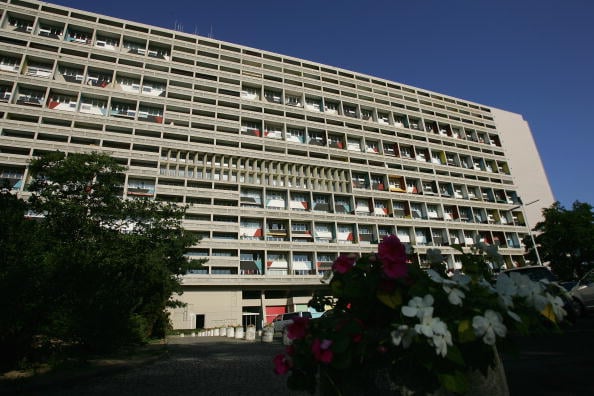Art World
Le Corbusier Sites Land UNESCO World Heritage Status Amid Attempted Military Coup in Turkey
The Istanbul meeting had to be briefly suspended due to the attempted coup.

The Istanbul meeting had to be briefly suspended due to the attempted coup.

Naomi Rea

Sites designed by the controversial architect Le Corbusier made the UNESCO World Heritage List yesterday after the World Heritage Committee reconvened its annual meeting, which had been briefly suspended on Saturday due to an attempted military coup late on Friday night in Turkey.
The committee convened in Istanbul on July 10, where tensions were already high following the June 28 attack on Ataturk airport. At the top of the agenda was the subject of the numerous threats to World Heritage Sites around the world in such an unstable period of history.

View of Istanbul. Photo via Wikimedia Commons.
In a statement from UNESCO on its website, Director-General Irina Bokova explained that World Heritage accreditation is “the idea that people of all cultures and faith can unite around outstanding universal value.”
“When a World Heritage site is destroyed anywhere in the world, we all suffer, we are all diminished, even if it is from another region, another period, another culture,” she said. “What is at stake here is more than adding new sites on a list. It is about reaffirming human values and human rights. It is about healing wounded memories, harnessing heritage to regain confidence, to recover and look into the future,” Bokova added.
The World Heritage Committee considered proposals to inscribe 29 sites on UNESCO’s World Heritage List, and made several important decisions before the events of Friday night.
For example, the work of Le Corbusier was granted World Heritage Status for “Outstanding Contribution to the Modern Movement” following two failed attempts in 2009 and 2011.
Le Corbusier’s utilitarian buildings made use of materials such as concrete, iron, and glass, and his plans altered the face of cities all over the world. The submitted dossier listed 17 sites across seven countries, notably featuring his Marseille housing project La Cite Radieuse, La Villa Savoye near Paris, and his planning of Chandigarh in northern India.

Le Corbusier, Palace of Assembly, Chandigarh. Photo via Wikimedia Commons.
The decision to grant them World Heritage status is huge, as his revolutionary functional designs are mired in controversy: adored by some, they are blamed for urban alienation by others who find them depressing and anonymous.
What’s more, Le Corbusier’s legacy has been further problematical due to revelations about his extreme political views. One of his biographers, Xavier de Jarcy, claimed last year that Le Corbusier was “an out-and-out fascist” and anti-Semite who collaborated with France’s wartime collaborationist Vichy regime.
Furthermore, five World Heritage Sites in Libya were inscribed on the List of World Heritage in Danger, with the Committee citing the damage already caused by the conflict affecting the country and the serious threat of further damage it poses.
It also added the site of Ani, a ruined city directly inside Turkey’s closed border with the ex-Soviet state of Armenia to its World Heritage list. The ruined churches and secular buildings of Ani are riddled with controversy due to the tense relationship between the two countries over the Armenian genocide during the First World War.